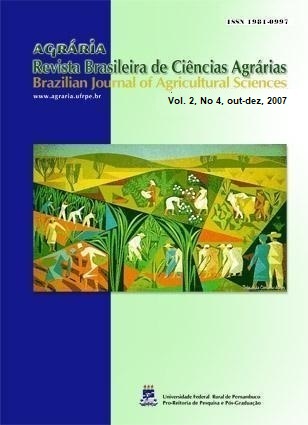Production of papaya seedlings in different substrates and phosphorus levels
DOI:
https://doi.org/10.5039/agraria.v2i4a1838Keywords:
Carica papaya, nutrition, growthAbstract
In the production of papaya seedlings there are little information about the combined use of substrates and phosphorus nutrition for satisfactory plant development. In that way, the objective of this study was to evaluate the effect of different combined alternative substrates and phosphorus fertilization in the improvement of the seedlings of papaya production cv. ‘Baixinho of Santa Amalia’. The experiment was carried out in the green house of the Rural Campus of the Department of Agronomic Engineering of Federal University of Sergipe, during the period of February to May, 2004. The experimental design was a completely randomized in 5 x 4 factorial scheme, with five substrates (combination of chicken manure, carbonized rice hull and forest humus) and four levels of P2O5 (0; 800; 1600; and 2400 g m-3 of P2O5), with five replicates. The experimental unit was composed of four useful plants. The observed variables were plant length (ALTP - cm), number of leaves (NF); total dry matter of the aerial part (MSPAT - g), leaf area (AF - cm2), stem diameter (DC - cm) and dry matter of the root system (MSSR - g). Effect of ‘P’ on growth of the papaya seedlings was not observed, and.substrates S2, S3 as S4 can be suitable for the development of papaya seedlings.



